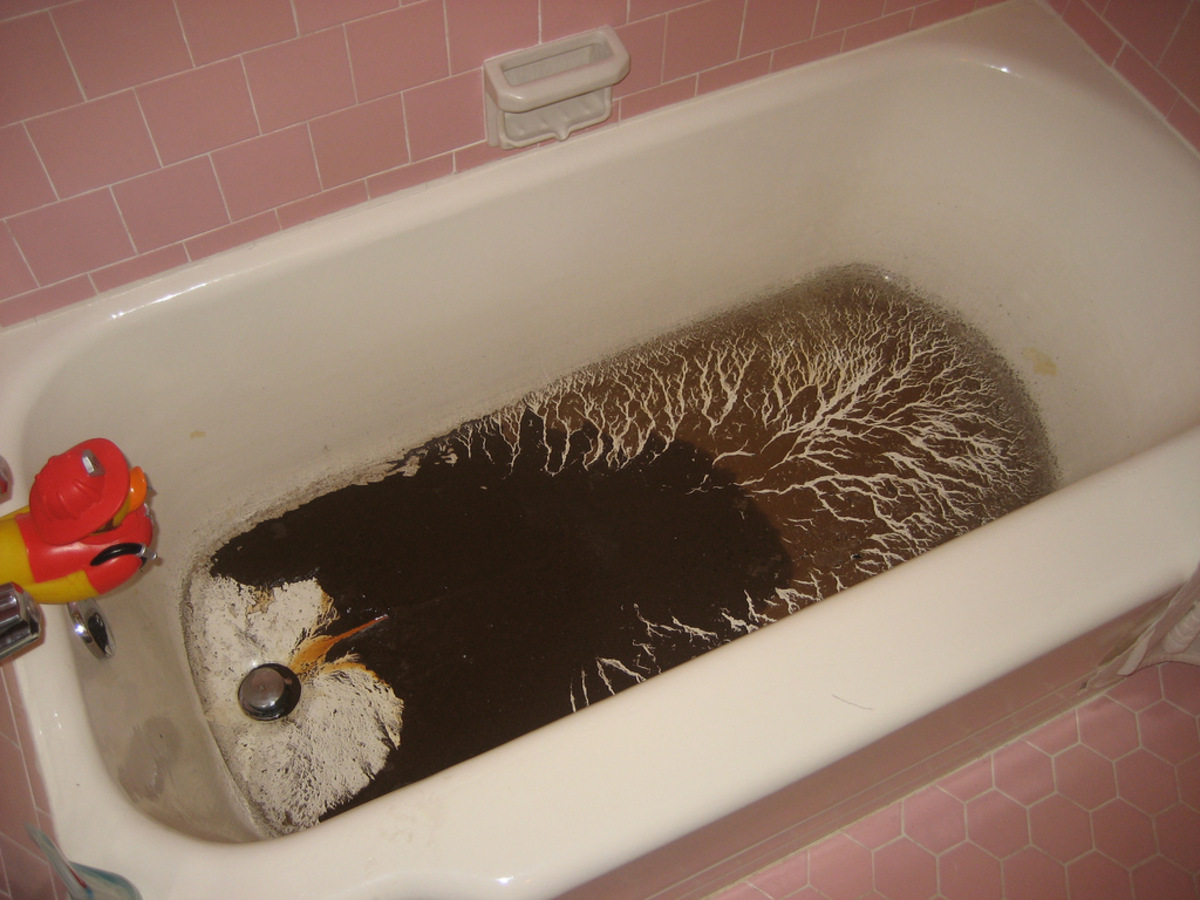Understanding the Causes of Effluent Backflow in the Bathtub
Free QuoteThey are making several great points about Why is Sewage Backing Up Into My Bathtub? as a whole in this content followed below.

Sewage backup in the bath tub can be an upsetting and unhygienic problem for any type of homeowner. Not only is it bothersome, but it likewise poses significant wellness dangers and indicates underlying issues with the plumbing system. Understanding why sewer is showing up via the tub is critical for taking suitable activity to deal with the problem effectively.
Introduction to the Concern
Usual Reasons for Sewage Backup
Obstructions in the Sewer Line
Among the most typical root causes of sewage backup is a clog in the sewer line. This can occur as a result of the build-up of particles, grease, or foreign things in the pipelines, avoiding proper circulation and triggering sewage to support into your tub.
Tree Root Invasion
Tree roots seeking moisture and nutrients can infiltrate sewer lines via little splits or joints. Gradually, these roots can grow and broaden, creating considerable damage to the pipes and causing sewer backup concerns.
Understanding the Trouble
When sewer draws back up right into the bath tub, it's a clear sign of a trouble with the water drainage system. The wastewater that should be streaming away from your home is instead discovering its way back into your home, which can result in significant damages and carcinogen.
Possible Causes
Several variables can contribute to sewage back-up in the bathtub. From blockages in the sewage system line to problems with the plumbing infrastructure, determining the origin is necessary for discovering an option.
Aging Framework
Older homes may have outdated plumbing systems that are a lot more at risk to corrosion, splits, and deterioration. As pipes age, they come to be much more vulnerable to leakages and obstructions, boosting the probability of sewage backup cases.
Heavy Rainfall or Flooding
Throughout periods of heavy rainfall or flooding, the drain system may come to be overwhelmed with excess water, causing back-ups and overflows. This can lead to sewer supporting into tubs and various other fixtures inside the home.
Indications of Sewer Back-up
Foul Odors
Undesirable odors originating from drains pipes or components, particularly in the washroom, may show sewer back-up problems. These smells are usually solid and persistent, signaling a problem that requires immediate attention.
Slow Draining Fixtures
Bathtubs, sinks, and commodes that drain gradually or otherwise whatsoever could be experiencing sewage backup. If numerous fixtures are affected all at once, it's likely that the problem stems from a typical point, such as the main sewage system line.
Gurgling Noises
Strange gurgling or gurgling sounds originating from drains pipes when water is running elsewhere in your home are a sign of air trapped in the plumbing system. This air build-up can arise from sewage backup and should be checked out without delay.
Health Risks Associated with Sewage Back-up
Contamination of Supply Of Water
Sewer back-up can contaminate the water in your home, positioning a severe health and wellness danger to you and your family members. Exposure to contaminated water can cause gastrointestinal issues, skin infections, and other illnesses.
Mold and mildew Growth
Moisture from sewage back-up can develop perfect conditions for mold and mildew growth in your house. Mold and mildew spores can worsen breathing issues and cause allergies in delicate individuals, making timely clean-up necessary.
Spread of Disease
Sewage consists of hazardous germs, viruses, and parasites that can cause a range of diseases, including hepatitis, cholera, and gastroenteritis. Coming into contact with sewer or infected surface areas places you in danger of infection.
Cleaning Up After Sewage Backup
Sanitation Procedures
Completely disinfect and sterilize impacted areas after sewer backup to get rid of dangerous bacteria and protect against mold development. Use suitable cleansing products and safety gear to guarantee safe and reliable cleaning.
Remediation of Influenced Areas
Repair any type of damages to flooring, walls, or fixtures caused by sewer back-up. Depending on the degree of the damage, you may need to change carpets, drywall, or various other materials to restore your home to its pre-loss condition.
Immediate Actions to Take
Shutting Off Water
In case of sewage backup, it's vital to turn off the water to avoid more contamination and damage. Situate the major water shutoff valve in your house and shut it off till the concern can be solved.
Contacting an Expert Plumber
Managing sewer backup is not a do it yourself job. Get in touch with a certified plumber with experience in taking care of sewage-related problems to analyze the scenario and do necessary fixings or cleanings.
Preventing Contact with Contaminated Water
Up until the sewage back-up is dealt with, prevent contact with contaminated water to stop the spread of bacteria and virus. Wear safety gear if you have to be in the affected location and clean your hands thoroughly afterward.
Preventive Measures
Routine Upkeep of Sewage System Lines
Set up routine examinations and maintenance of your sewer lines to identify and address prospective issues prior to they rise right into significant problems. This can consist of cleaning out particles, examining for tree origin invasion, and fixing any damaged pipelines.
Mounting Backwater Shutoffs
Consider mounting bayou shutoffs in your plumbing system to avoid sewage from receding right into your home during durations of heavy rainfall or flooding. These valves instantly close when water draws back up, protecting your home from contamination.
Correct Disposal of Household Waste
Prevent flushing anything besides bathroom tissue and human waste down the commode to prevent clogs and obstructions in the drain line. Dispose of oil, oil, and various other house chemicals appropriately to lessen the danger of plumbing problems.
Why is Sewage Coming Up Through Your Bathtub?
Reasons You May Have Sewage in Your Bathtub
All the drains in your home lead down different pipes to get to the main sewer line. If you’re seeing sewage in the bathtub, the problem is that the main sewer line is clogged up, which is causing the water running through other drains to be pushed back into other pipes. The problem isn’t the bathtub, but the main line. The sewer line can get backed up by anything that goes down the drain, from food waste, hair and soap particles to jewelry or children’s toys. Tree branches or dirt can also impact the sewer line. If you’re seeing sewage in the bathtub, you have a big problem that usually needs a professional plumber. Trying to fix this problem without the right tools or knowledge can lead to bigger plumbing problems.
Fixing a Clogged Sewage Line
Although you shouldn’t try to fix the clogged sewer line on your own, you may be able to mitigate the issue until you can get a plumber to your home. A plunger isn’t going to help, because it won’t be able to reach the sewage drain to unblock the problem.
Turn Off Water
Find the main shutoff valve to your home to turn off the water. This prevents more water from going down the drain which is only going to flow back into your bathtub.
Snake the Toilet and Drain
Start by using a drain pipe snake to clean out the toilet drain. Rotate the snake clockwise when you push the snake down. As you pull it out, the snake should spin counterclockwise. Follow up by snaking out the bathtub drain. If you are successful, both the toilet and shower will drain efficiently. If you’re not successful, you probably have a bigger problem than your tools and experience can manage.
Contact a Professional Plumber
Pros have the tools to find the source of the problem and the experience to manage big blockages without causing more damage to your pipes. It can save you a lot of stress by contacting the professionals sooner rather than later.
Identify the Early Signs of a Clogged Sewage Line
If you’re gearing up for a holiday family gathering or just want to avoid the hassle of a clogged sewage line in your home, make sure you recognize the signs of a clogged sewer line.
Slow drains are a sign of a sewer line problem. Gurgling drains from any drain in your home indicate that you may have an obstruction in the drains. If your toilet keeps getting clogged, it might be a problem with the sewer line. When you see laundry water or water from the dishwasher in different sinks in the home, it’s an indication that your sewer drain is beginning to get backed up. These symptoms can often be “fixed” temporarily to get through a day or week before you start seeing the same problem. When it comes to plumbing problems, you want to fix the root of the problem instead of muddling through. The clog will not go away on its own.
https://handymanconnection.com/mississauga/articles/why-is-sewage-coming-up-through-your-bathtub/

I hope you enjoyed our piece on What To Do If Sewage Starts Backing Up Into the Shower. Thanks so much for taking the time to read our piece of content. Feel free to take the time to share this blog post if you appreciated it. I enjoy your readership.
Call Today